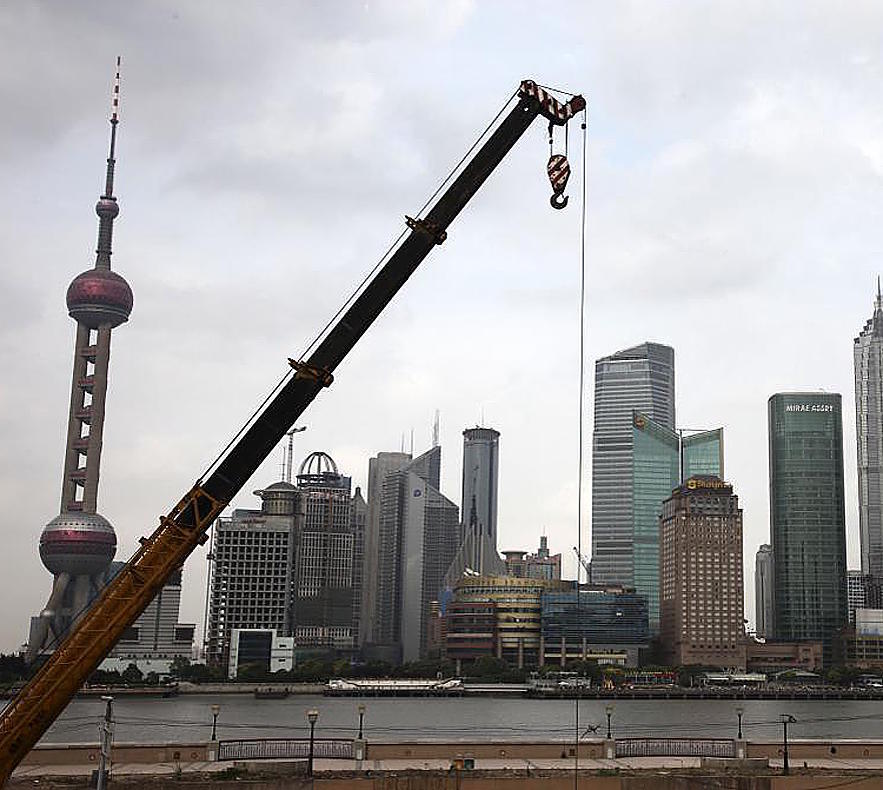For a long time, China seems to measure its modernity and extreme development in tons of cement and kilometers of steel. As if every added brick had to be visible from space because that is an irrefutable sign of power. Skyscrapers that pierce the clouds, avenues for endless parades, dams that tame ancient rivers, and bridges that, in addition to being functional, have to be monumental oases that satisfy the thirst for greatness. China spent over 2,000 years building a wall to keep the rest of the world at bay. Today, it is constructing mega engineering works for the rest of the world to come and see them or, at the very least, to be amazed from a distance.
They have just done it again: inaugurating the world's highest suspension bridge. The headline repeats every few years. But Chinese engineers continue to erect structures that defy geography and at the same time break world records. The latest example was the unveiling on Sunday of the Great Huajiang Canyon bridge, which rises 625 meters and spans 2,890 meters over a gorge in Guizhou province, approximately twice the height of the Eiffel Tower.
Now, the travel time between the two sides of the canyon has been reduced from two hours to two minutes. "It is a masterpiece of engineering that has been completed in just three years. This milestone will significantly boost the economic and social development of Guizhou, which has already become a global benchmark in bridge construction," Chinese officials stated during the inauguration ceremony.
The previous highest bridge in the world, the Beipanjiang (565 meters), was also in Guizhou. This southwestern province, one of the poorest in China, boasts over 32,000 bridges built or under construction, including 15 of the world's top 25 highest bridges.
"The Great Huajiang Canyon Bridge is much more than a simple engineering feat; it is a three-dimensional projection of the country's new innovative and ecological development philosophy, characterized by a transformation from Made in China to Created in China," an editorial in the Chinese newspaper Global Times pointed out.
What Chinese propaganda does not mention when boasting about its colossal constructions is that many of them have also been built on a huge mountain of debt that is suffocating many local governments and has long been dragging down the country's economic growth.
This problem has been exacerbated by the collapse of the real estate sector, leaving many administrations, accustomed to generating significant income from land sales, with less liquidity to meet their debts.
Several studies detail how the expansion of infrastructure - sometimes excessive - in China significantly contributed to economic growth, but many of the colossal works have not been profitable in the long term. Airports in remote locations that are always empty, mega industrial parks in areas with low demand, underutilized roads, and urban developments with skyscrapers and vast public spaces that remain largely unoccupied.
A report this year from the IMF estimated that the debt of financing vehicles (LGFVs, state-owned investment entities whose main function is to circumvent local government borrowing restrictions and finance large infrastructure and development projects) could exceed 58 trillion yuan (around 6.90 trillion euros).
Chinese leaders boast of having built the world's most extensive high-speed rail network in less than 20 years (a total length of 191,000 kilometers, covering 99% of cities with over 200,000 inhabitants, according to official figures). Another mega engineering feat they are proud of is the 55-kilometer bridge connecting Hong Kong to the cities of Zhuhai and Macao across the Pearl River estuary. It is the world's longest sea crossing system, consisting of three cable-stayed bridges, an underwater tunnel, and four artificial islands.
Currently, China is constructing a mega dam in Tibet that could generate three times more energy than the Three Gorges Dam, the world's largest, also in Chinese territory. Authorities recently announced an investment of over 1 trillion yuan (around 131.73 billion euros) for this hydroelectric megaproject, which will become the world's most expensive infrastructure.
Another ambitious project is the construction of solar power plantsin space, which Chinese experts have dubbed "the Three Gorges Dam in the sky". Space solar power plants capture solar energy in Earth's orbit and transmit it to Earth, providing continuous energy unaffected by seasons or day-night cycles.
"For this gigantic project to become a reality, significant advances must first be made in heavy-lift rocket technology to transport the necessary materials to space, as well as new technologies needed to efficiently transmit energy from space to Earth," explained scientist Long Lehao, a member of the Chinese Academy of Engineering (CAE), who is one of the project's pioneers.
From space, we move to the vast Taklamakan Desert in the northeast of the Asian giant, where Chinese engineers have created a "green belt" with various types of vegetation spanning 3,050 kilometers, a mega reforestation project to combat desertification.
Outside the country, China flexes its muscles as the global construction powerhouse thanks to ambitious infrastructure projects launched under the umbrella of the new Silk Road. The Asian superpower continues to expand its XXL-sized cement empire everywhere.
